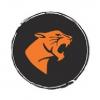Dear Challenge participants,
A lot of the interest we saw in the HWC Tech Challenge was from field conservationists working all over the world who wanted to hear about new tools that could potentially be applied in their work. Although we’re excited to share how the winning solutions develop, we appreciate that this interest went far beyond the two winners who were selected against the specific needs identified by the WWF landscape teams.
We have no doubt that the ideas/project you shared may indeed answer urgent challenges that other in our community are facing. We also see the value in connecting the people working on solutions to these challenges together – something that a number of you identified as a part of the reason you were hoping to get out of your involvement in the HWC Tech Challenge.
To this end, we invite you to join other challenge participants in a discussion here. As a start, it would be fantastic to see you join in the conversation providing the following:
- a short introduction of yourself and a little about your background,
- why you entered the challenge,
- what idea / solution you put forward - how it works and what development stage you're in
Share as much (or as little) about the solutions you submitted. If you ‘re not comfortable sharing any detail, that’s perfectly fine – it is completely up to you. It’s an opportunity to meet others who were similarly enthused by the challenge and a platform to showcase your innovative ideas so that other field conservationists can discover them and get in touch with you if they want to find out more.
Best regards,
the HWC Tech Challenge team of WWF and WILDLABS
18 July 2018 10:09am
Do we have to post the information here, as replies?
19 July 2018 6:13am
Android Apps can save Wildlife!
Most of the wildlife deaths in a Human-Wildlife conflict happens due to lack of knowledge of the presence of the animal in human habitat. Over the past 10 months, we have developed an integrated system, which collects data from multiple modules like fence monitoring system, android app, drone surveillance etc and analyzes the big data to predict the presence of a wildlife in certain locations. With the predictive analysis, organizations and authorities can take actions to protect the wildlife. The end user will be provided with a mobile app to enter sufficient data into the system.
We have been testing our first phase in India with Wildlife Trust of India and Kerala Forest Department, so far our product has withstood the obstacles.
Hope some more ideas could help our idea to grow mutually. :)
24 July 2018 11:24am
We are deploying a LoRaWAN network over a mixed use rural area in NE Scotland.
One of the use cases that we are trying to work on is a low cost means of monitoring stock fencing integrity – example: Car comes off road and through stock fencing. Farmer only finds out 3 hours later when cattle found wandering down dual carriageway.
We are hoping to find Known to Work solution that we can deploy as part of our programme to engage with the local farmers to make them "smarter" about the potential of technology.
Can anyone help?
27 July 2018 4:12pm
Arribada Initiative is building an early animal detection and warning system to alert communities to the presence of dangerous animals. Our system relies on thermal array sensors capable of taking video of an animal thermal signature. We hope to train an algorithm to automatically recognize dangerous animals and send an alert to the community.
We are posting periodic progress updates on WILDLABS.net. Our first post can be found here: https://www.wildlabs.net/resources/case-studies/hwc-tech-challenge-thermopile-sensor-project
Our 2nd progress update should be posted on WILDLABS shortly.
We would love any feedback or suggestions from the community on our project!














Leopard Tech Labs